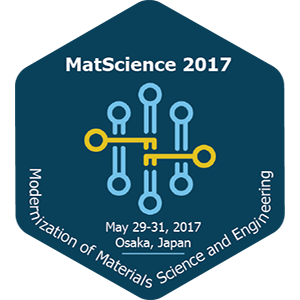
Chong Siang Yaw
Monash University, Malaysia
Title: Fabrication of a Heterojunction V2O5/BiVO4 Photoanode with Improved Photoelectrochemical Performance for Water Splitting Reaction
Biography
Biography: Chong Siang Yaw
Abstract
Hydrogen (H2) has featured prominently as a potential alternative and renewable energy source. To date, one of the most feasible production routes of solar H2 generation is through the photoelectrochemical (PEC) water splitting. In this regard, bismuth vanadate (BiVO4) is a promising semiconductor photoelectrode material that can be used for PEC water splitting. This is owing to its low-cost, relatively narrow bandgap of 2.4 eV and favourable positioning of valance band edge that provides sufficient overpotential for water oxidation. To date, however, the practical photocurrent yield of BiVO4 photoelectrode reported in the literature is far lower than its full potential due to poor photogenerated carriers separation and high bulk and surface recombination rates. The emergence of heterojunction photoelectrode design is considered to be able to address these setbacks, while providing an internal electric field for improving the photogenerated charge carriers transfer in a PEC cell setup. Thus, the main aim of this study was to fabricate a heterojunction V2O5/BiVO4 photoanode due to the fact that V2O5 is the most stable form of vanadium oxide, and has received intense interest due to its inherently good electrochemical and photochemical properties. The resultant heterojunction V2O5/BiVO4 photoanode structure was characterised by using field emission-scanning electron microscopy (FE-SEM), X-ray diffraction (XRD), UV-visible spectroscopy, and a number of PEC measurements and analysis. Through this study, it was found that the photocurrent density of a bare BiVO4 photoanode increased from 0.07 to 0.40 mA/cm2 (at 1V vs. Ag/AgCl) after the formation of a heterojunction photoanode structure with an underneath V2O5 layer. This is almost a 6-fold improvement in terms of photocurrent density, and this study has demonstrated the presence and role of V2O5 in the heterojunction structure that extends the light absorption range as well as improving the electrons mobility and effective separation of photogenerated charge carriers.

